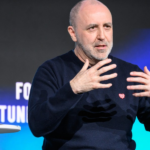For weeks, all the talk on Wall Street is that the growth of the AI sector must, surely, be unsustainable and that this bubble is due to pop. The record-high price of gold, alone, suggests that a lot of investors want a hedge against an implosion in U.S. tech stocks.
Yet some analysts are saying that you should believe the hype. They argue:
The biggest cheerleader for AI is, of course, Dan Ives at Wedbush who recently published a note titled “Expecting a Robust 3Q Tech Earnings Season to Match the AI Hype; Popcorn Moment.”
Importantly, that spending isn’t coming from debt or VC funding, according to Jan Frederik Slijkerman and Timothy Rahill at ING. They recently published a note examining whether all this AI spending might hurt corporate credit quality and discovered that … everything is totally fine!
“From a debtholder perspective, we are less concerned with a potential mismatch between supply and demand, as the large technology platforms mentioned above have funded their expansion plans from their cash flows,” they said.
Goldman Sachs agrees, in part for the same reasons. The bank published a note yesterday titled “Why we are not in a bubble… yet,” which pretty much says it all.
Still, surely stocks are overvalued? The majority of gains in the S&P 500 this year have been driven by a handful of tech companies. That concentration risk could hurt investors if there is a pullback.
We aren’t there yet, according to Jeff Buchbinder, chief equity strategist for LPL Financial in Boston. “The forward price-to-earnings ratio (P/E) of the S&P 500 has yet to reach dotcom era levels, and in fact remains below December 2020 levels because earnings were depressed coming out of the COVID-19 pandemic,” he said in a note today. “So large caps stocks are expensive, lifted by AI-driven technology stocks, but not quite to the extremes of 25 years ago.”
The economics of AI are much more robust than the dotcom era, he says. “Perhaps the key difference between the broader secular AI growth theme and the dotcom era is that large, AI hyperscalers have mostly funded capital expenditures (capex) with strong internal cash flows, not through AI revenue in singularity or by issuing debt or equity. In comparison, dotcom era spending was broadly funded through massive amounts of ‘vendor financing,’ which ultimately led to the circular flow of capital that fueled the bubble burst.”
And even if there is a correction, it won’t be too bad, argue Samuel Tombs and Oliver Allen at Pantheon Macroeconomics. They estimate that AI capex boosted U.S. GDP growth by 0.3% points. Even if it all disappeared it would not be enough to tip the U.S. into recession, they say. “Weaker growth is more likely than a recession if the AI boom turns to bust,” they said in a note to clients. “The likely hit from the AI boom turning to bust would be a significant drag on the economy, but probably a smaller shock than the bursting of the dot-com bubble in 2000, and an ensuing recession would be far from a forgone conclusion.”
That comes with a caveat: “It would be more alarming, though, if a reversal of AI optimism led to a broader correction in the stock market beyond AI-linked companies, especially if the hit to households’ wealth and confidence tipped the fragile balance in the labor market, leading to a jump in the layoff rate,” they said.
Here’s a snapshot of the markets ahead of the opening bell in New York this morning:









